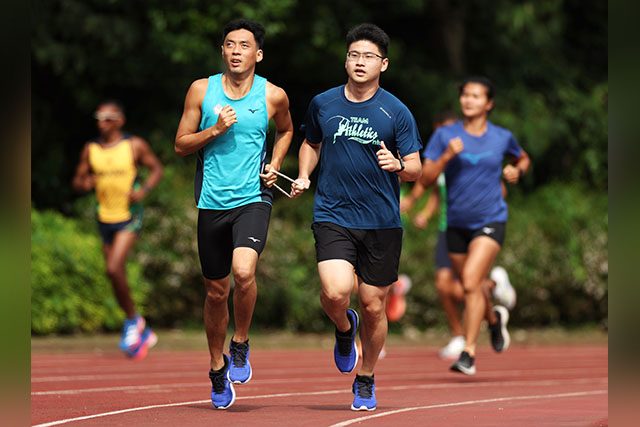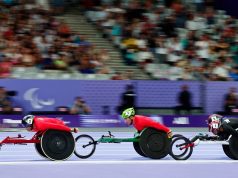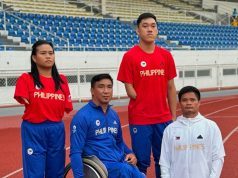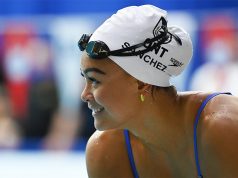
The heat experts were right. In 2019, historical data suggested that the average daily temperature athletes would have to contend with during the Tokyo 2020 Olympic and Paralympic Games would be between 28.2℃ and 29.7℃, with relative humidity of 65%. These have indeed been the hottest Olympics on record.
Archers have collapsed, tennis players have feared they might die and volleyballers have scorched their feet on the sand. But for many Paralympians, these conditions present a major additional challenge.
The complexity and severity of a Paralympian’s impairment combined with the demands of their particular discipline—the type, intensity, duration, mode of exercise and environmental conditions—will determine their particular susceptibility to heat-related issues. The extent to which any athlete responds physiologically to the heat will also vary widely within any specific impairment group.
Specific impairment groups
Research has shown that those with spinal cord injuries, amputation, multiple sclerosis or cerebral palsy are likely to suffer the most in the heat.
When we exercise, around 75-80% of the energy consumed by the body is released as heat. The problem for some Paralympic athletes is that they have a reduced ability to sweat or to dissipate sweat. Others potentially produce more heat than an Olympic athlete performing the same activity.
Athletes with spinal cord injuries are unable to sweat or control their skin blood flow below what is known as their injury level. The higher up the spinal cord the injury is, the smaller the body surface that is able to sweat. Core temperatures in wheelchair rugby players with high spinal cord injuries, for example, have been shown to increase at a much greater rate than in players with other physical impairments.
This remains true even though wheelchair rugby matches are played indoors in moderate temperatures (18°C-21°C) and players with a high spinal injury cover less distance (17% less) and push slower (on average about 10% slower) than teammates with other physical impairments. Less physical effort means they produce less heat than their teammates. However, the difficulty they have in expelling this heat through sweating and skin blood flow sees their core body temperature increase much faster.
Athletes with amputated limbs also have a smaller body surface area through which to get rid of heat. Meanwhile, sweat builds up in the sockets of the prosthesis, which can potentially lead to blisters, skin conditions and heightened discomfort.
Athletes with multiple sclerosis may also be less able to sweat and more intolerant of the heat in general. Poor muscle coordination and involuntary movements or spasms in athletes with cerebral palsy means they too could get hotter, quicker when exercising. They also have a harder time pacing their effort, which is even more important in hot conditions. Anecdotal observations have shown that when some of these athletes start out too fast, even in cooler climates, they risk falling over in the closing stages of a race.
Heat acclimation and cooling strategies
As with Olympic athletes, heat acclimation may be helpful for Paralympians to prepare their bodies to cope in the heat. This can include training in heat chambers or greenhouse tents and having post-exercise hot baths.
Research on the benefits for Paralympians in particular, however, is limited. Each individual would need to be carefully monitored to ensure the heat exposure was proving beneficial, not harmful.
One of the main things heat acclimation is intended to help with is to get you sweating more and earlier on. As the sweat evaporates, the skin’s surface and body core cool down. As shown above, athletes with a spinal cord injury must contend with a large surface area of their body that is not able to sweat. They may experience cardiovascular benefits, but acclimation won’t induce any beneficial sweating.
Further, travel restrictions during the pandemic have also prevented athletes from working in specialized heat chambers, especially earlier in the pandemic. This may have affected those athletes at an increased risk of COVID, who have had to severely reduce interactions with others.
Once events are underway, there are a lot of things that can help: fans, misting, ice vests, iced towels, water immersion, ice slushies. Athletes make use of them, often in combination, before and after competition, as well as during cooling breaks scheduled into events.
Each of these strategies need to be practiced before use in competition. And the logistics involved for making sure they have what they need must be carefully considered. Cooling a wheelchair athlete’s hands before a race would not be a great idea—numb hands don’t help with dexterity.
Some disability sporting bodies do have clear heat policies. The International Tennis Federation’s regulations for wheelchair tennis typically works lots of breaks into events and training schedules, as well as rescheduling events for cooler parts of the day where applicable.
Similarly, while teams such as Paralympics GB have spent a lot of time and money preparing their athletes physically and mentally, other national bodies don’t have the same level of access to funds, facilities or expertise. Even within Paralympics GB, some sports such as wheelchair rugby are deemed to have less medal potential, which typically means less funding and as a consequence less preparation support for the Games.
Conditions in Tokyo may be overwhelmingly hot and humid. But anyone competing at the 2020 Paralympic Games will have had to overcome many hurdles to even make it to Japan. Take Great Britain’s powerlifter Ali Jawad, a double amputee athlete overcoming setbacks due to Crohn’s disease. These are athletes determined to show the world that anything is possible.
, Senior Lecturer in Sport Engineering, Nottingham Trent University.
This article is republished from The Conversation under a Creative Commons license. Read the original article.









